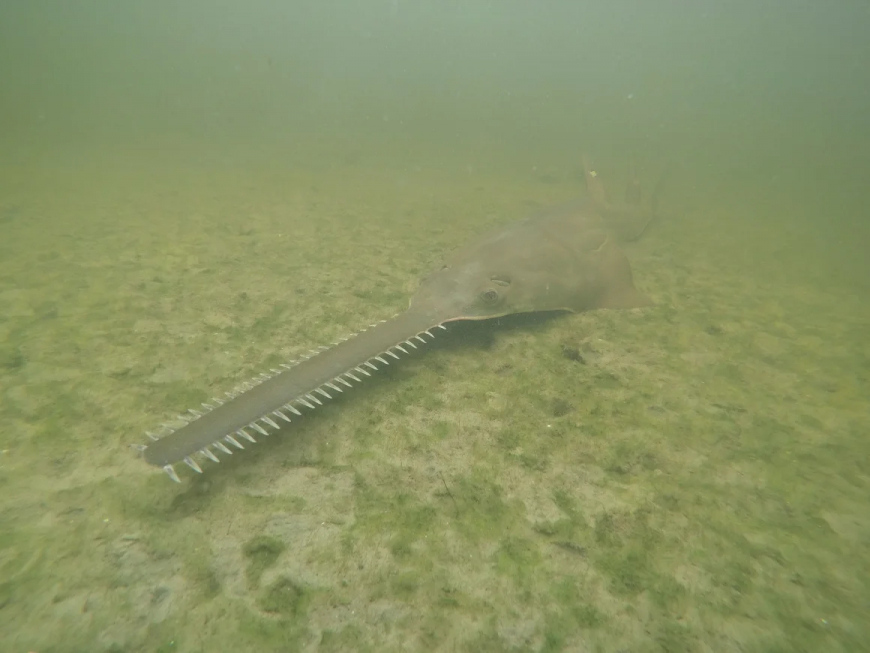Six rare sawfish deaths in 7 days
Six rare sawfish deaths in 7 days have scientists baffled amid bizarre Florida fish behavior

The smalltooth sawfish, a critically endangered animal, is in even more danger than usual in the Florida seas. Six of the rare creatures washed up dead in the past seven days, officials reported Wednesday – a dramatic increase in mortality amid a mysterious die-off that has baffled scientists for months.
These animals that look like a shark with a chainsaw-like mouth, are a part of a group of fish called elasmobranchs that include rays, skates and sharks, and they can live for several decades under normal circumstances. Typically, about five mature adults are lost each year, mostly when they are accidentally caught in fisheries.
But so far this year, the Florida Fish and Wildlife Conservation Commission said they’ve lost 38, according to Wednesday’s report, six of which came in just the previous week.
It is still a mystery as to why the sawfish have been dying in record numbers. But divers and anglers have also reported seeing a variety of other species behaving in a highly erratic manner: spinning in circles rather than swimming. Some sawfish, too, have been spotted spinning before dying.
Spinning fish reports began in fall 2023. The spike in sawfish mortalities began in January 2024. It’s “possible that these two events could be related,” the Florida Fish and Wildlife Conservation Commission says.
One such distressed sawfish was spotted in Cudjoe Bay in the Florida Keys on April 5. Biologists with the commission and the Mote Marine Laboratory transported the sawfish a temporary tank at the Mote facility where it was observed. The fish’s condition stabilized, and on Thursday it was transported by Ripley’s Aquariums Conservation Team to a more permanent Mote quarantine facility for rehabilitation.
The commission and Florida’s Bonefish and Tarpon Trust have recorded more than 200 incidents with more than 30 species swimming in this unusual way. This is happening mostly in the Florida Keys, but there have also been reports as far north as the Miami area.
The smalltooth sawfish was the first marine fish to receive federal protection through the Endangered Species Act in 2003. The animal used to live in waters all throughout the Gulf of Mexico and along the East Coast from Florida to North Carolina, according to the National Oceanic and Atmospheric Administration, but their small numbers generally are now only found off the coast of Florida.
In addition to the spinning, recent reports from anglers and divers in Florida say they have seen the sawfish beach themselves.
A team of local, state and federal wildlife experts are scrambling to find out what’s causing the animals to go into these dangerous death spirals.
“Typically, when we think of fish acting strangely or dying we either think of low oxygen conditions in the water or red tide and so we saw neither,” Mike Parsons, a marine scientist at Florida Gulf Coast University told CNN’s Bill Weir. Parsons wonders if the hot temperatures in the ocean waters are to blame.
Most tests for toxins have been negative, but scientists have seen an unusually high number of algae called gambierdiscus that can produce a wide variety of neurotoxins that can be harmful to fish and dangerous to humans.
Gambierdiscus is normally found in tropical and subtropical waters all around the world, but the algae can grow quickly when waters are warmer than usual. The climate crisis has brought record hot temperatures to the waters around southern Florida.
Gregg Furstenwerth, a lifelong diver in the Florida Keys, said he feels unnerved seeing fish swim in circles and stingrays swimming upside down
“It’s like I’m in the middle of a disaster movie and I’m that guy yelling from the mountain top trying to get people to pay attention,” Furstenwerth told CNN’s Bill Weir.
The uncertainty of what is causing the problem bothers him.
“There is no concrete, conclusive proof of what is happening yet and that is still to be determined, which is quite terrifying.” said Furstenwerth. “If it continues, it is going to be the end of this ecosystem as we know it.”

 Phương Nhung
Phương Nhung 





